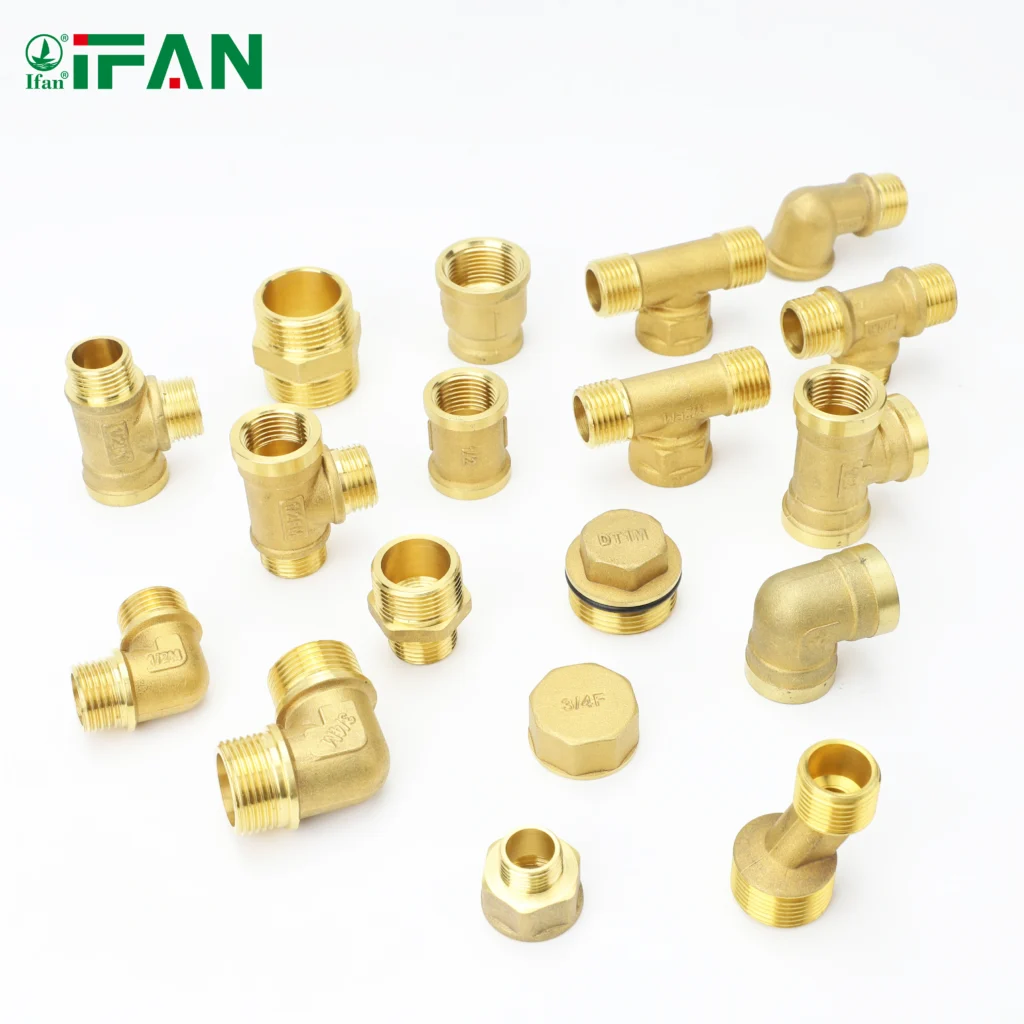Brass fittings are essential components in plumbing systems, known for their durability, corrosion resistance, and versatility. The manufacturing process of brass fittings involves several precise steps to ensure high-quality, reliable products. Here’s an in-depth look at how brass fittings are made:
1. Raw Material Selection
- Brass Composition: Brass is an alloy primarily composed of copper (60-70%) and zinc (30-40%), with small amounts of other elements like lead or silicon to enhance machinability and strength.
- Quality Control: High-quality raw materials are selected to ensure the final product meets industry standards for strength, corrosion resistance, and durability.
2. Melting and Alloying
- Melting: The raw materials are melted in a furnace at temperatures around 900-940°C (1650-1725°F).
- Alloying: Copper and zinc are combined in precise proportions to achieve the desired brass alloy. Additional elements may be added to improve specific properties, such as lead for machinability or silicon for dezincification resistance.
3. Casting
- Mold Preparation: The molten brass is poured into molds made of sand, steel, or graphite, depending on the desired shape and size of the fittings.
- Casting Methods:
- Sand Casting: Used for larger or more complex fittings.
- Die Casting: Ideal for high-volume production of smaller fittings with precise dimensions.
- Continuous Casting: Produces long brass rods that are later cut and machined into fittings.
4. Machining
- Cutting: The cast brass pieces are cut to the required lengths using saws or cutting machines.
- Turning and Drilling: The fittings are machined on lathes or CNC machines to create threads, grooves, and other precise features.
- Threading: Threads are cut or rolled onto the fittings to ensure compatibility with pipes and other components.
5. Forging (Optional)
- Hot Forging: Some brass fittings are forged under high pressure to enhance their strength and durability. This process involves heating the brass and shaping it using dies.
- Cold Forging: Used for smaller fittings, cold forging improves the material’s mechanical properties without heating.
6. Surface Finishing
- Deburring: Sharp edges and burrs are removed to ensure smooth, safe handling.
- Polishing: The fittings are polished to achieve a smooth, shiny surface, improving their appearance and corrosion resistance.
- Plating: Some fittings may be plated with nickel, chrome, or other materials for additional corrosion resistance or aesthetic appeal.
7. Heat Treatment
- Annealing: The fittings are heated and slowly cooled to relieve internal stresses and improve ductility.
- Stress Relieving: This process ensures the fittings maintain their shape and strength under pressure.
8. Quality Control and Testing
- Dimensional Inspection: Fittings are measured to ensure they meet precise specifications.
- Pressure Testing: Fittings are tested under high pressure to check for leaks or weaknesses.
- Corrosion Testing: Samples are exposed to corrosive environments to verify their resistance to rust and dezincification.
- Certification: Fittings are certified to meet industry standards (e.g., NSF, ANSI, ASTM) for safety and performance.
9. Packaging and Distribution
- Cleaning: Fittings are cleaned to remove any machining residues or contaminants.
- Packaging: They are packaged in protective materials to prevent damage during transportation.
- Labeling: Fittings are labeled with relevant information, such as size, type, and certification marks.
Conclusion
The manufacturing process of brass fittings involves a combination of precise engineering, quality control, and advanced techniques to produce durable, reliable, and high-performance components. From raw material selection to final testing, each step is carefully executed to ensure the fittings meet the demands of modern plumbing systems. Understanding this process highlights the importance of quality and craftsmanship in creating brass fittings that stand the test of time. Whether for residential, commercial, or industrial applications, brass fittings are a testament to the synergy of science and engineering in the plumbing industry.
View more:https://www.ifanfittings.com/


